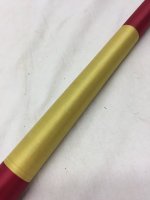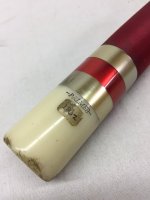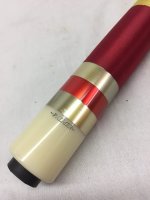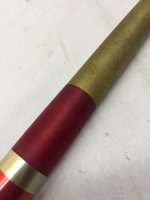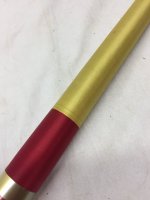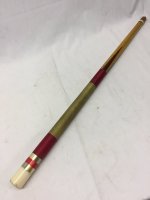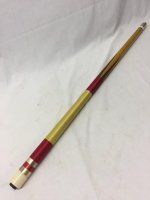I've been on a mission for awhile now to encourage people to respect the originality of vintage cues and to take the time to evaluate a cues condition to decide what is necessary, if anything, to preserve a cue.
I recently happened upon a very original Palmer Model A in soiled condition with some nicks in the forearm and a chipped butt cap.
Some wouldn't have hesitated to rewrap and refinish the cue and dispense with the chipped butt cap to have a new one made. That never entered my mind because for me it was not only paramount to save the original wrap but also the cap since it was stamped "Palmer".
Paul Drexler of PFD Studios has cleaned nylon wraps for me in the past so I knew, or at least hoped, this one could be brought back from the brink as well.
So today I brought the cue to his shop for that service as well as reshaping the butt cap and a general cleanup. The overall job was such a success, I am reluctant to even refinish the nicked forearm.
I'll let you be the judge.
I recently happened upon a very original Palmer Model A in soiled condition with some nicks in the forearm and a chipped butt cap.
Some wouldn't have hesitated to rewrap and refinish the cue and dispense with the chipped butt cap to have a new one made. That never entered my mind because for me it was not only paramount to save the original wrap but also the cap since it was stamped "Palmer".
Paul Drexler of PFD Studios has cleaned nylon wraps for me in the past so I knew, or at least hoped, this one could be brought back from the brink as well.
So today I brought the cue to his shop for that service as well as reshaping the butt cap and a general cleanup. The overall job was such a success, I am reluctant to even refinish the nicked forearm.
I'll let you be the judge.

